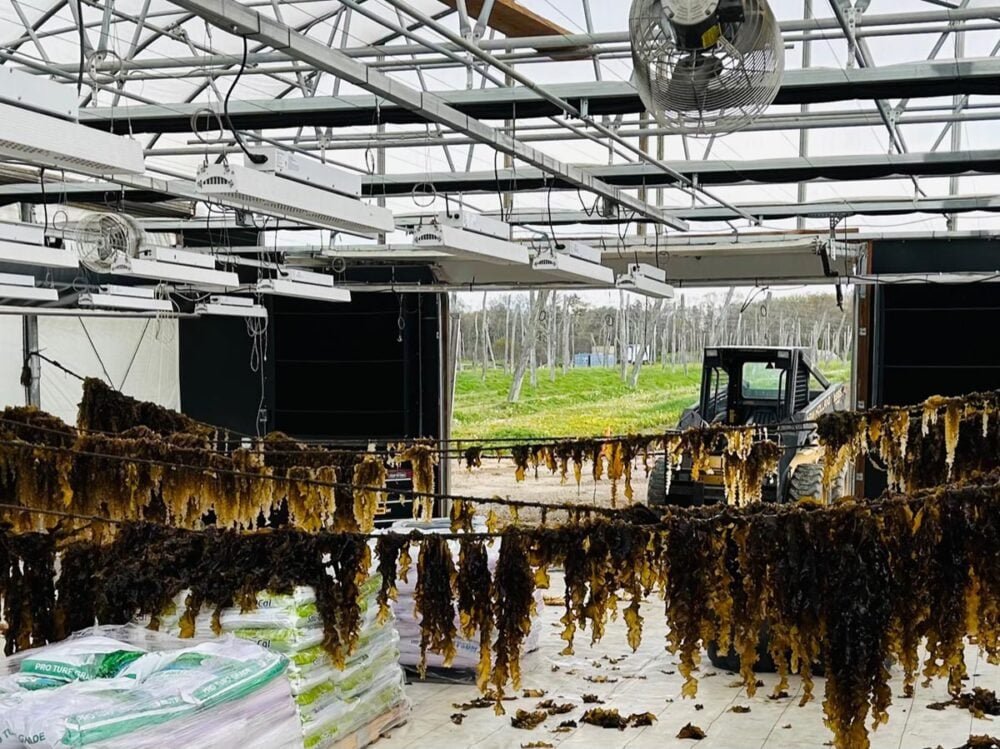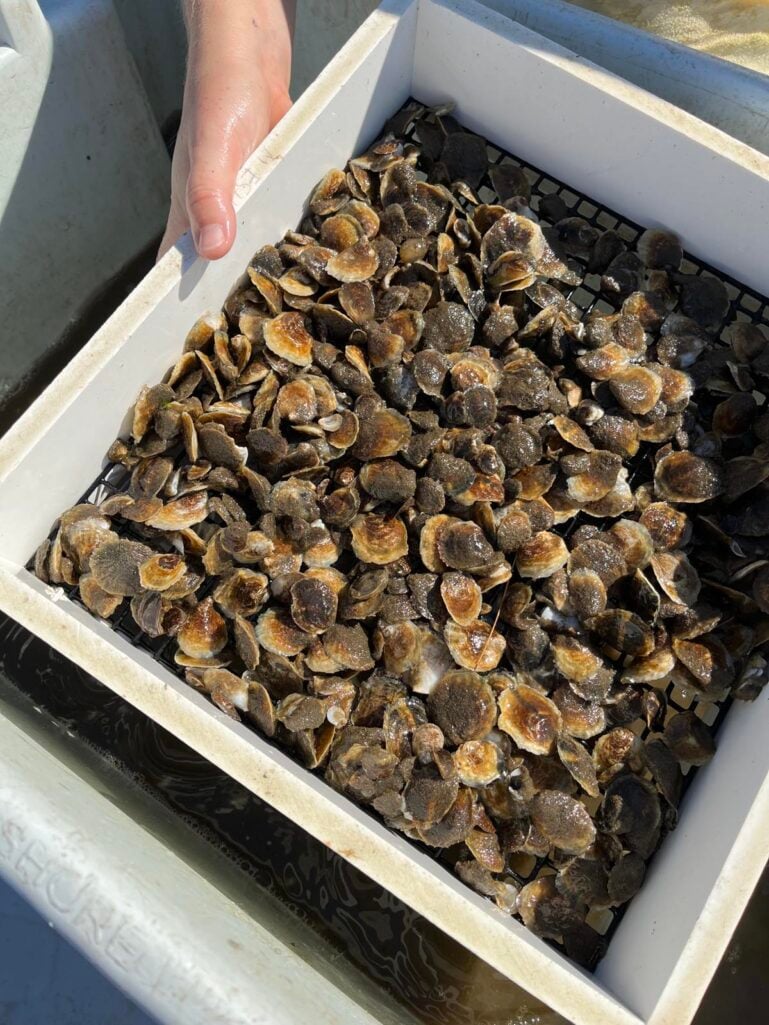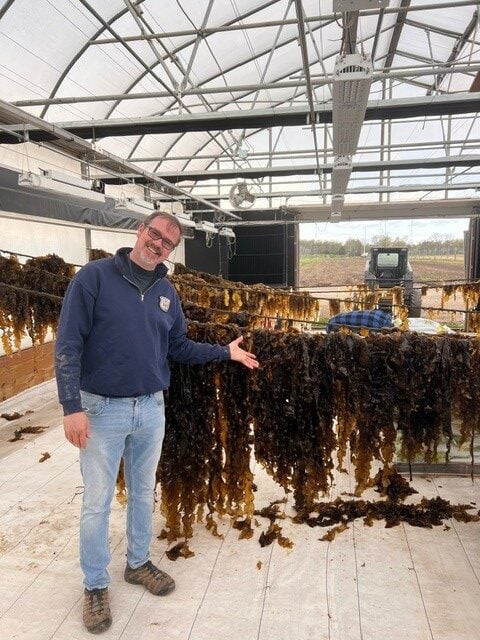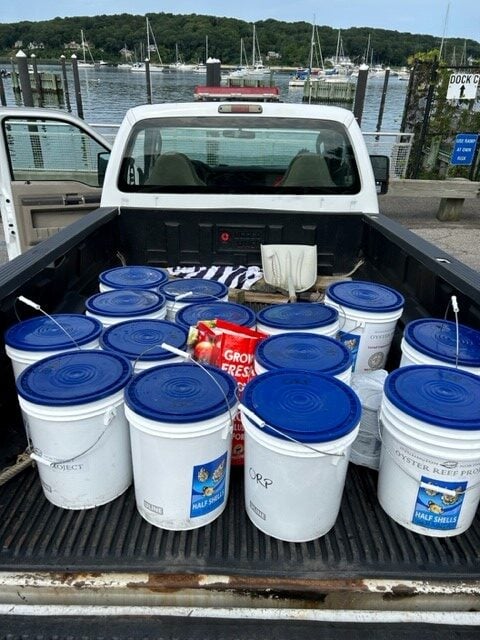50 gallons.
That’s how much water a singular oyster can filter in one day—highlighting the abundantly clear
importance oyster habitat restoration brings to the efforts to improve water quality on
Long Island.
Many organizations across the Island have been pooling resources and banding together to
increase the success of oyster restoration—Save the Great South Bay (STGSB) and Rotary
Environmental Action Coalition of Huntington (REACH) are two examples.
This past March, STGSB hosted a panel dedicated to promoting discussion about current oyster
restoration projects among community members and important county officials alike.
As the winter season comes to an end, REACH is shifting its focus from sugar kelp cultivation to
its Native Plant Project, eventually circling back to oyster restoration. Over the course of a year,
each of these projects has its own seasons: sugar kelp from November to May, oysters from June
to September, and the native plants during those in-between periods of spring and fall.
Although sugar kelp is indigenous on Long Island, it’s also greatly overharvested, and REACH is
trying to bring it back. Besides belonging here, sugar kelp is also a wonderful way of naturally
removing large amounts of carbon dioxide from our atmosphere. In fact, it’s more than 10 times
more effective than trees.
James Wylie, project coordinator of the Huntington-Northport Oyster Reef Project, has also been
working closely with their sugar kelp project, and described how their season-long efforts will
soon be coming to fruition.
In early May, the grown sugar kelp will be harvested and then dried in their greenhouse. Once
dried, it can be shredded and milled into a fine powder. Naturally packed with nutrients and
minerals, this powder then becomes a bio stimulant when added to soil, strengthening its root
systems and increasing drought resistance.
Additionally, this sugar kelp powder would help decrease the reliance on petroleum-based
soils bought at stores—ultimately helping decrease the burden placed on oysters when considering how runoff carries the pesticides we place on our lawns into our waters. “They work at separate times of the year, and they work on different issues, but it’s a beautiful synergy,” Wylie said.
Wylie says REACH has plans this upcoming summer to conduct experiments that would back
the validity of these sugar kelp soil methods for commercial purposes. He stressed how its
importance has yet to be truly realized. “We would love for an industry on Long Island to
develop around sugar kelp . . . it just hasn’t gotten its footing yet,” he said.
Garrett Chelius, REACH director and deputy director of Huntington’s Department of Maritime
Services hopes to have their greenhouses soon open to the public. “Eventually I would like to
welcome residents to start their garden in the greenhouse because it’s much cheaper to start a
garden with seeds than it is to buy small plants.”
Chelius agrees that the success seen in other places and even countries—they have a partner
organization in Japan, which has been in this practice for hundreds of years—is something
that should be able to occur here on Long Island as well.
In an attempt to get this in motion, Chelius said “what we’re trying to do is make a program that
other towns can very easily replicate.”
Much like many other volunteer-based organizations on the island, REACH is looking for
additional funding. “We want to improve water quality and in order to do that you really need
to scale up,” Wylie said, which is largely dependent on increased funding.
Another project REACH is currently working on is its Native Plant Project, which seeks to
promote the growth of indigenous plants such as grasses, milkweeds and flowering plants. These
kinds of plants are essential for providing birds and bees with the food they need to continue
pollination.
“Helping nature heal itself,” is the motto of REACH, Wylie said.
“I want to be able to see your feet at the bottom of the beach, I want people to be able to go
fishing and catch a ton of fish,” Chelius said. “I just want healthy days.”
Grace Sargent is a reporter with The SBU Media Group, part of Stony Brook University’s
School of Communication and Journalism’s Working Newsroom program for students and local media.




